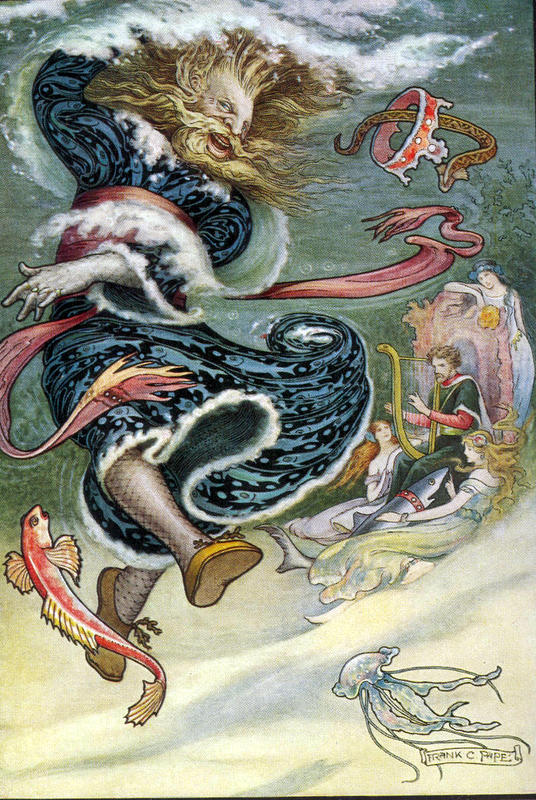#eastern franks
Explore tagged Tumblr posts
Text

Saxon Emperors: with the accession of the Saxon king of Germany, Otto I, the power of the Germanic Roman empire was confirmed, subsuming previous names including East Francia and, to an extent, the 'Kingdom of Germany'.
#history#historyfiles#germany#medieval#medieval europe#saxons#holy roman empire#middle ages#medieval history#hre#east francia#eastern franks
8 notes
·
View notes
Text








"The Russian Story Book" illustrated by Frank C.Papé (1916)
#Россия#Russia#vintage#book#Frank C.Papé#english artist#artist#books#русская культура#russian culture#literature#english art#art#illustration#русские сказки#russian fairy tales#fairy tales#beauty#русский фольклор#russian folklore#folklore#history#russian#english#Eastern Europe#illustrations#slavic#traditional#Europe#1910s
388 notes
·
View notes
Text

Buster Crabbe #5: Buster Crabbe and the Maid of Mars
by Al Williamson; Roy Krenkel and Frank Frazetta
Eastern Color
16 notes
·
View notes
Text
new hetalia art challenge: draw a ship like this

I'll start

that's how the christianisation of bulgaria went trust me :DDDD
#the bulgar aristocrates rebelled against christianity in 865 cuz they supported gay gay homo sex#later vladimir-rasate also rebelled but he shipped bulgaria x kingdom of eastern franks instead of bulgaria x byzantine empire#and that's why his father blinded him and threw him into the dungeon#cuz he had no eyes to appreciate the superior ship#which is bulgaria x byzantine empire#but in a platonic no homo no sin way!!!#hetalia#aph bulgaria#hws bulgaria#hetalia bulgaria#aph byzantine empire#hws byzantine empire#hetalia byzantine empire#aph greece#hws greece#hetalia greece
49 notes
·
View notes
Text


any you'll guys wanna help me with a little vexillology
overall project name is in the tags <3
8 notes
·
View notes
Text

I just keep looking at this like wow.. lightroom is so awesome
#not my fav photo framing wise hence it being on main but Im so impressed by how much lightroom can do#ls dunes#anthony green#pupshow#the eastern#this is wholesale stealing edit inspo from Amanda also esp in popping the purples out#they had a little purple spark in that gorgeous Frank n Anthony pic that really captured me………….#Amandas work is always very influential and inspiring to me ofc… I feel like thats abundantly clear so often
7 notes
·
View notes
Text
LS Dunes-The Eastern-Atlanta, GA
11/4/2024
3 notes
·
View notes
Text
Fukuzawa plays Go & Mori plays chess because of how the two different game strategies align with the resources they have available and the structures of their organizations. Not all symbolism is descriptive; much of it is substantive.
#bsd#bungo stray dogs#bsdrewatch2023#it's not east vs west#if you notice Fukuzawa's office contains both eastern and western design elements#which is tied together with the frank lloyd wright-esque design#because he contains both#if you try to observe bsd from strict dichotomies#you miss the part where the agency is the twilight
18 notes
·
View notes
Text

Ships that stopped at Whitby Harbor (Seen here circa 1880) inspired Bram Stoker as he wrote Dracula. Photograph By Frank Meadow Sutcliffe, The Royal Photographic Society Collection/Victoria and Albert Museum, London/Getty Images
The Little-Known Shipwreck That Inspired Bram Stoker’s ‘Dracula’
Stoker was moved by grim details from the world around him while penning his horror masterpiece. The real fate of a ship called the Dmitry played an outsized role in his imaginings.
— By Melissa Sartore | August 18, 2023
The arrival of the Demeter in Bram Stoker's Dracula serves as a fundamental part of the titular character's story: the ship brings death himself to England.
Stoker drew inspiration for his genre-defining horror novel from his time in Whitby, and the dark 1885 fate of the real ship Dmitry on the town’s shore.
The death and tragedy around Stoker ultimately shaped the story that became one of the most famous pieces of English literature and set the stage for the next century of vampire lore.

The wreck of the Dmitry from Narva, now Estonia, aground on Tate Hill Beach in 1885, Whitby, Yorkshire, UK. Photograph By Frank Meadow Sutcliffe, Colin Waters/Alamy Stock Photo
The Dmitry Becomes the Demeter
During the summer of 1890, Irish novelist Bram Stoker vacationed at the seaside town of Whitby in northeast England. Despite spending only a month in the town, Stoker was enthralled by his surroundings: Grand Mansions and Hotels lined the West Cliff while remains of the seventh century Whitby Abbey towered over the East Cliff. Nearby, the cemetery at the Parish Church also served as inspiration as the story of Dracula came to life.
Stoker was also enchanted by the many ships making harbor here. He reportedly visited the Whitby Museum to explore the history of these vessels, as well as a local library, where he came upon William Wilkinson’s book The Accounts of Principalities of Wallachia and Moldova. Stoker marked in his notes:
DRACULA in the Wallachian language means DEVIL. The Wallachians were, at that time, as they are at present, used to give this as a surname to any person who rendered himself conspicuous either by courage, cruel actions, or cunning.
Stoker reportedly asked around the shore about shipwrecks in Whitby, notably the Dmitry, a ship that had wrecked five years earlier.
The cargo vessel Dmitry had set sail from Narva in Russia (modern-day Estonia) in 1885. On October 24, the Dmitry was one of two ships run ashore at Whitby by “a storm of great violence,” according to contemporary newspaper accounts. The other vessel, the Mary and Agnes, was stranded in the raging sea and a lifeboat was sent to rescue its crew. When the crew of the Mary and Agnes was ferried to the shore, per the Leeds Mercury, “their safe landing [was] the signal for loud huzzas by the thousands of people assembled on shore.”
Those same onlookers watched on to see what would happen with the Dmitry. As reported by the North-Eastern Daily Gazette, the crew remained on board in the hopes they would be able to dock, but “the sea beat savagely against the vessel. Her masts gave way and fell with a crash over her side, and the vessel herself began to break up.”
Though unclear exactly how they were rescued, in the end, all seven members of the Dmitry’s crew were safely brought to shore.
There were several unique aspects to the last voyage of the Dmitry that appear to have stood out to Stoker. The Demeter originated in Varna (an anagram for Narva, where the Dmitry originated), and similarly carried “ballast of silver sand, with only a small amount of cargo—a number of great wooden boxes filled with mould.”
Through conversations with fishermen in Whitby, Stoker learned of an untold number of local deaths at sea. Stoker reportedly made note of some 90 names from gravestones in Whitby for future use in his story, including the surname “Swales.” Soon after the arrival of the Demeter in Dracula, he wrote “Mr. Swales was found dead… his neck being broken.”
What Inspired Dracula’s Canine Form?
In Stoker’s novel, Dracula himself took the form of a dog to make his way from the Demeter to dry land, but there was no dog reported to have been on the Dmitry. According to Mel Ni Mhaolanfaidh and Marlon McGarry in 2021, the dog in Dracula may be an homage to the wreck of the Greyhound in 1770.
The Greyhound sailed from Whitby and sank off the coast of Ireland on December 12, 1770 (120 years prior to Stoker’s arrival in the town). Stoker’s mother, Charlotte, was from Sligo, a town in close proximity to the wreck. When the storm that sank the ship surged again, a young cabin boy was left stranded. The rescue effort failed, with only one out of the some 20 men sent to save him tragically dying in the process.
Stoker made no reference to a dog in his notes until two months after he’d departed from Whitby. On October 15, 1890, Stoker wrote, “When ship ran in to Collier's Hope, big dog jumped off bow & ran over pier - up Kiln Yard & church steps & into churchyard…Local dog found ripped open & graves torn up…” It’s not clear if Stoker learned of these details from the Dmitry wreck, another Whitby wreck, or was his own creation.
In the novel, the arrival of the Demeter was paired with a similarly remarkable incident: “The very instant the shore was touched, an immense dog sprang up on deck from below, as if shot up by the concussion, and running forward, jumped from the bow on the sand.”
The dog, a disguised Dracula, wrought bloodshed and death from that point forward. This dog resembled the barghest, a mythical monster often associated with Yorkshire. Spellings and specific forms of barghest vary but the dog-like being foretold of pain, disaster, or even death to all who saw it. The barghest also elicited howling from dogs in its vicinity, something Dracula protagonist Mina Murray reported took place soon after the arrival of the Demeter.
#Dracula#Whitby Harbor | Yorkshire | UK 🇬🇧#Frank Meadow Sutcliffe#Bram Stoker#Shipwreck#Horror Masterpiece#Northeast England 🏴#Grand Mansions | Hotels | West Cliff#Cemetery | Parish Church#Whitby Museum#William Wilkinson#The Accounts of Principalities of Wallachia and Moldova 🇲🇩#Cargo Vessel Dmitry#Narva in Russia 🇷🇺 | Modern-Day Estonia 🇪🇪#The Mary & Agnes#North-Eastern Daily Gazette#Mr. Swales#Mel Ni Mhaolanfaidh | Marlon McGarry#Greyhound#Charlotte | Sligo#Collier's Hope#Mina Murray | Dracula Protagonist
22 notes
·
View notes
Text

Frank R. Paul (1884-1963) “Flight of the Eastern Star” Air Wonder Stories pulp magazine cover (December 1929)
Source
13 notes
·
View notes
Text

Germanic Roman Emperors: during this period, Berengar of Friuli claimed the throne of Italy, but Guy of Spoleto was a major rival after failing to gain West Francia and now wanting East Francia.
#history#historyfiles#germany#italy#medieval#medieval europe#medieval history#middle ages#hre#holy roman empire#berengar#spoleto#west francia#east francia#east franks#eastern franks
4 notes
·
View notes
Text
I thought I had left my house in such good shape before I went on a nine-day vacation, and was so proud. Yeah no there was asparagus in the (cold) oven the whole week. #thatADHDlife
At least the oven wasn't on? Go team?
Anyway, it's been fun and I knitted a ton, but dang I missed my cats and am glad to be home.
1) Moses Lake, 2) Dry Falls, 3) Soap Lake, 4) it's called POP here, 5) a cute way of helping people pronounce the town name of Chewelah, 6) from an exhibit on Frank S. Matsura, 7) my BFF since 1991 and me, 8) my mom at a railroad museum, 9) me and my mom and some other tourists on a tiny train ride, 10) my mom at Camlann Medieval Village










#It me#Washington State#Eastern Washington exists too lol#Soap Lake#Dry Falls#Camlann Medieval Village#Northwest Museum of Arts & Culture#Moses Lake#Frank S Matsura#Great Northern & Cascade Railway#Church camp friends are the best friends <3#Chewelah
3 notes
·
View notes
Text




Buster Crabbe #5: Buster Crabbe and the Maid of Mars
by ?; Al Williamson, Roy Krenkel (some backgrounds) and Frank Frazetta (Inks)
Cover by Frank Frazetta
Eastern Color

Source CAP'N'S Comics
Cap'n's Comics: Buster Crabbe #5 by Al Williamson, Frank Frazetta, and Roy Krenkel (capnscomics.blogspot.com)
21 notes
·
View notes
Text

In 1988 the Belkan Federation's eastern provinces took the opportunity to secede as part of the Federal Law Review. The two newly-independent (and formerly united as Galbica) nations of Gebet and Recta would sign a defense pact with Yuktobania and FATO to strengthen their military capability in the event of Belkan revanchism.
Seven years later, Belka would put the Cor Pact to the ultimate test...
2 notes
·
View notes
Text



Famous Funnies (1934) #88-89
0 notes
Text
youtube
At Eastern, we solved overcrowded flights by adding more people!
#history#advertising#vintage#retro#ads#vintage advertising#vintage ads#retro ads#retro advertising#adverts#Eastern#eastern airlines#Frank Borman#Apollo 8#Astronaut#Airlines#Airplanes#Jets#Crowded Airplane#Overcrowding#Flight#Airfare#sightseeing#destinations#traveling#Youtube
1 note
·
View note